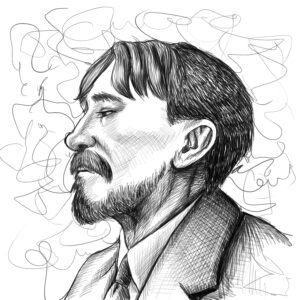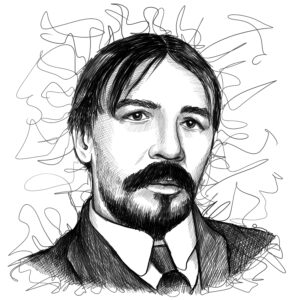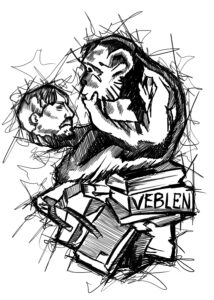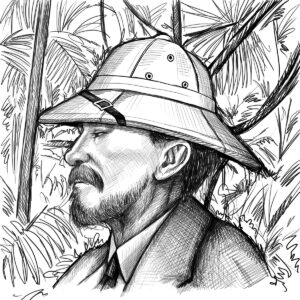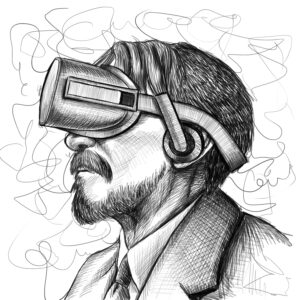 Cosmology, as commonly used, refers to the origin, structure, and science of the physical universe. It draws upon multiple foundational sciences, such as astronomy, physics, and astrophysics, to explain the big picture. Similarly, our human-made socioeconomic universe is a complex system of interconnected phenomena and disciplines. It is built upon underlying human biological and supra-biological (social and physical) sciences that continue to lack a cosmological approach to their interconnected complexity within the broader socioeconomic context.
Cosmology, as commonly used, refers to the origin, structure, and science of the physical universe. It draws upon multiple foundational sciences, such as astronomy, physics, and astrophysics, to explain the big picture. Similarly, our human-made socioeconomic universe is a complex system of interconnected phenomena and disciplines. It is built upon underlying human biological and supra-biological (social and physical) sciences that continue to lack a cosmological approach to their interconnected complexity within the broader socioeconomic context.
A century ago, the American social scientist Thorstein Veblen pioneered a new cosmological approach to our human-made socioeconomic universe. He fused elements of human biological, social, and material sciences into a holistic methodology that examined the interaction between our inherent biological instincts and environmental influences (cultural, technological, etc.). Veblen’s cosmological methodology emphasized that “the whole is greater than the sum of its parts” when it comes to human modus operandi.
Prisoner of Academic Taxonomy
A century later, Veblen remains one of the most misinterpreted, misunderstood, and misrepresented scientists in America. Though a highly credentialed academic economist, his work has been “owned” by the discipline of economics for the past hundred years. This disciplinary claim over his pioneering thought has largely kept his ideas confined within a framework rooted in 18th-century philosophical conceptions of human nature. Today, Veblen’s contributions are often relegated to a narrow “school of thought” known as Institutional or Evolutionary Economics.
As Veblen observed, the pursuit of disciplinary expertise often requires a “trained incapacity” to perceive beyond the boundaries of that discipline. Each field develops its own principles, laws, and perspectives, which create a limited lens through which phenomena are interpreted. Modern economics, with its heavy reliance on quantitative models and mathematics, still rests on an outdated profile of human nature. As a result, economics often becomes little more than a theological justification for our “business as usual” socioeconomic system.
To truly understand Veblen’s work, one must step outside the narrow lens of a single discipline and approach his insights at a transdisciplinary, cosmological level. This requires zooming out to see how human nature arises from the interplay between biological, social, and physical sciences. His work calls for orchestrating these disciplinary pieces to create the harmony of a broader socioeconomic cosmology.
A New Transdisciplinary Definition of Socioeconomics
Veblen drew from a wide array of disciplines to construct a new working model of the human-made socioeconomic order. Not only did his work challenge long-held assumptions in economics, but it also questioned the structure of academic taxonomies in the human sciences. He developed a new profile of human nature grounded in Charles Darwin’s evolutionary and biological definition, marking a shift away from theological and philosophical definitions that had previously dominated.
At the same time, emerging social sciences, such as anthropology, sociology, and psychology, were beginning to explore adaptive social behaviors as expressions of our biological makeup. These insights formed the foundation of Veblen’s new socioeconomic cosmology.
According to Veblen, our socioeconomic universe operates through an intricate fusion of inherent biological behaviors and environmental influences (culture, technology, etc.). These two interconnected behavioral force fields shape how we provision ourselves and the structure of our everyday lives. This dynamic reflects an evolutionary interaction between instincts and the environments in which they are expressed.
Instinctual Roots to Our Socioeconomic Reality
Veblen built his theory of human modus operandi on behavioral patterns he termed “instincts,” which served as placeholders for our core genetic traits. Within the socioeconomic context, these instincts encompassed “the good, the bad, and the ugly” in terms of their impact on society. He traced these patterns throughout human history and civilizations. In more recent decades, biological, psychological, and zoological sciences have refined our understanding of these instinctual behaviors in ways that align with Veblen’s ideas.
At the root of these instincts lies our predatory nature, inherited from the animal kingdom. This trait manifests in various forms, including competitiveness, invidiousness, aggression, and violence. Among dominant elites in any society, this predatory prowess often signals honor, esteem, and communal respect. Intertwined with our predatory tendencies are countervailing instincts, such as the “Parental Bent” (altruism), “Idle Curiosity,” and “Workmanship.” Idle Curiosity drives our quest for knowledge and technological innovation to support the species. Workmanship, meanwhile, channels innovation into purposeful production while avoiding waste and futility.
Veblen situated these instinctual behaviors within what he termed the “State of the Industrial Arts”, a phrase denoting the level of knowledge and technological development in a society at any given point in history. He applied this framework to 20th-century American industrial society.
Despite this new state of industrial development, the prevailing belief systems remained rooted in 18th-century European notions of “Natural Rights” and human nature. These beliefs framed socioeconomic life in terms of free competition, self-help, equal opportunity, and unregulated markets. In America, such ideas fused with cultural ideals of individualism and laissez-faire economics. But biologically-based human nature cannot, and does not, operate solely within this philosophical paradigm.
Veblen characterized the new post-industrial American socioeconomic system as a “pecuniary culture.” In this system, society is divided into two functional domains: business and industry. Business, he argued, represents our predatory instincts expressed through the pursuit of pecuniary gain, often achieved by restricting industrial output. Business and finance thus became the new vehicles of predatory elite control, replacing tribal leaders, monarchs, and religious authorities of earlier eras. In contrast, industry embodies our matter-of-fact instincts, Idle Curiosity and Workmanship, expressed through practical, productive activity.
Entering Veblen’s Socioeconomic Universe
To engage with Veblen’s work meaningfully, one must adopt this cosmological perspective. His insights are captured in 11 major books, all readily available in print and digital formats. Though the titles may initially seem disconnected, each one is linked by Veblen’s foundational concept of instinctual human behavior operating within the American socioeconomic system. Each book serves as a portal into his socioeconomic cosmology.
Titles such as The Theory of the Leisure Class, Higher Learning in America, The Theory of Business Enterprise, The Vested Interests, The Price System and the Engineers, Essays in Our Changing Order, The Instinct of Workmanship, Absentee Ownership, and The Place of Science in Modern Civilization are all interconnected. They are bound together by Veblen’s analysis of human nature and environmental influence. Pay close attention to his terminology, as it encodes key concepts that recur throughout his body of work. His terms cluster around four core areas: human nature, scheme of life, beliefs and knowledge, and the state of the industrial arts. These categories act as the cosmological markers that guide readers through his universe of ideas.
Conclusion
Veblen’s cosmology of human modus operandi provides a lens through which we can understand the complex fusion of biological, social, and physical forces that shape our socioeconomic macrocosm. Re-examining his work in light of contemporary science only heightens its relevance. While the environmental influences constantly evolve, the underlying behavioral instincts remain, expressed in new ways, yet grounded in a biologically determined foundation.
What is most striking about Veblen’s work is how he connects these behaviors to the habits and institutions that define our everyday socioeconomic reality. Today, a century after his death, American socioeconomics continues to follow the trend lines he predicted, especially the evolution of the pecuniary culture. This culture has advanced to the point where large enterprises now generate more revenue from pecuniary activities than from actual industrial production. The ultimate outcome of Veblen’s business-industry dichotomy has been the large-scale deindustrialization of the American socioeconomic system.
Lorem ipsum dolor sit amet, consectetur adipiscing elit. Ut elit tellus, luctus nec ullamcorper mattis, pulvinar dapibus leo.
